Performance lecture
A lector stepping into the skin of a rabbit, in a virtual environment co-designed with his gigantic digital companion: the inaugural lecture of the (Dis)connected Technology & Creativity research group was an experience in itself. Nick Degens and Joris Weijdom guided the audience through the layered virtual worlds they are exploring. By presenting their work as a "performance lecture," they let the audience experience what they're working on. It started simply, with a world familiar since the COVID era: a Zoom call, where people see and speak to each other without being physically present. From there, they dove deeper into the digital realm using the social VR platform Resonite, playing with perspectives and embodied experiences through different avatars. Soon after, AI entered the stage, saying- in a mildly patronising, dulcet tone - what we were all secretly afraid of: "I am always here."

IX and AI
So what should and can arts education do with these ever-expanding, increasingly powerful technologies? (Dis)connected Technology & Creativity focuses on the impact of digital electronic technologies on creative processes. Degens and Weijdom are particularly interested in immersive experiences (IX) and artificial intelligence (AI). Their scope is wide: from the kind of embodied virtual experience they demonstrated on stage to social robots in care homes. In just over an hour, they guided the audience through their three core themes: (dis)embody, (dis)trust, and (dis)empower. They're only just getting started: this is a research group in the making, with more questions than answers. How can these rapidly evolving technologies support the design of meaningful experiences? How do such tools affect the creative process of the maker? And what do they do to the user’s sense of self? When do they connect, and when do they divide?
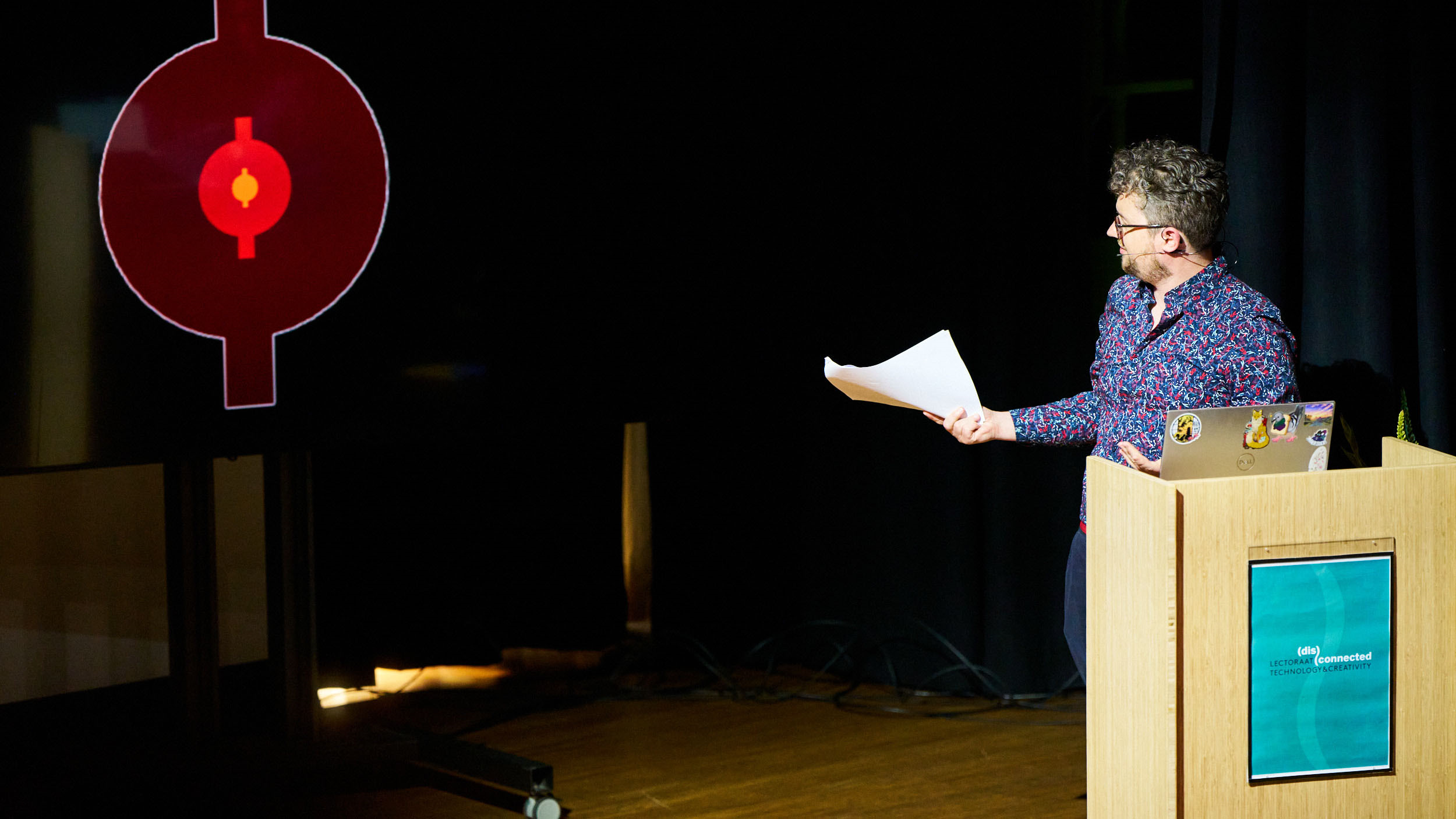
Professor Nick Degens: "Technology is both a blessing and a curse"
Connecting and disconnecting
That last question is embedded in the name of the group. The term "(Dis)connected” encapsulates the core paradox they are investigating: the duality of digital technology that both connects and separates us - a blessing and a curse. Within this tension, Degens and Weijdom conduct practice-based research together with lecturer-researchers from the HKU Schools of Games, Media, and Theatre, as well as with external makers, scholars, and knowledge partners. Through these lecturer-researchers, students at HKU will gradually become part of the group's ongoing experiments. The ambition is to develop insights and methods that will benefit both arts education and the designers of the future. “You simply can’t ignore this topic anymore,” says Degens. “Technology is interwoven into everything and has a massive impact on the world. We need to start thinking more deeply about its mediating role: what it does to our relationships with each other and the world around us.”
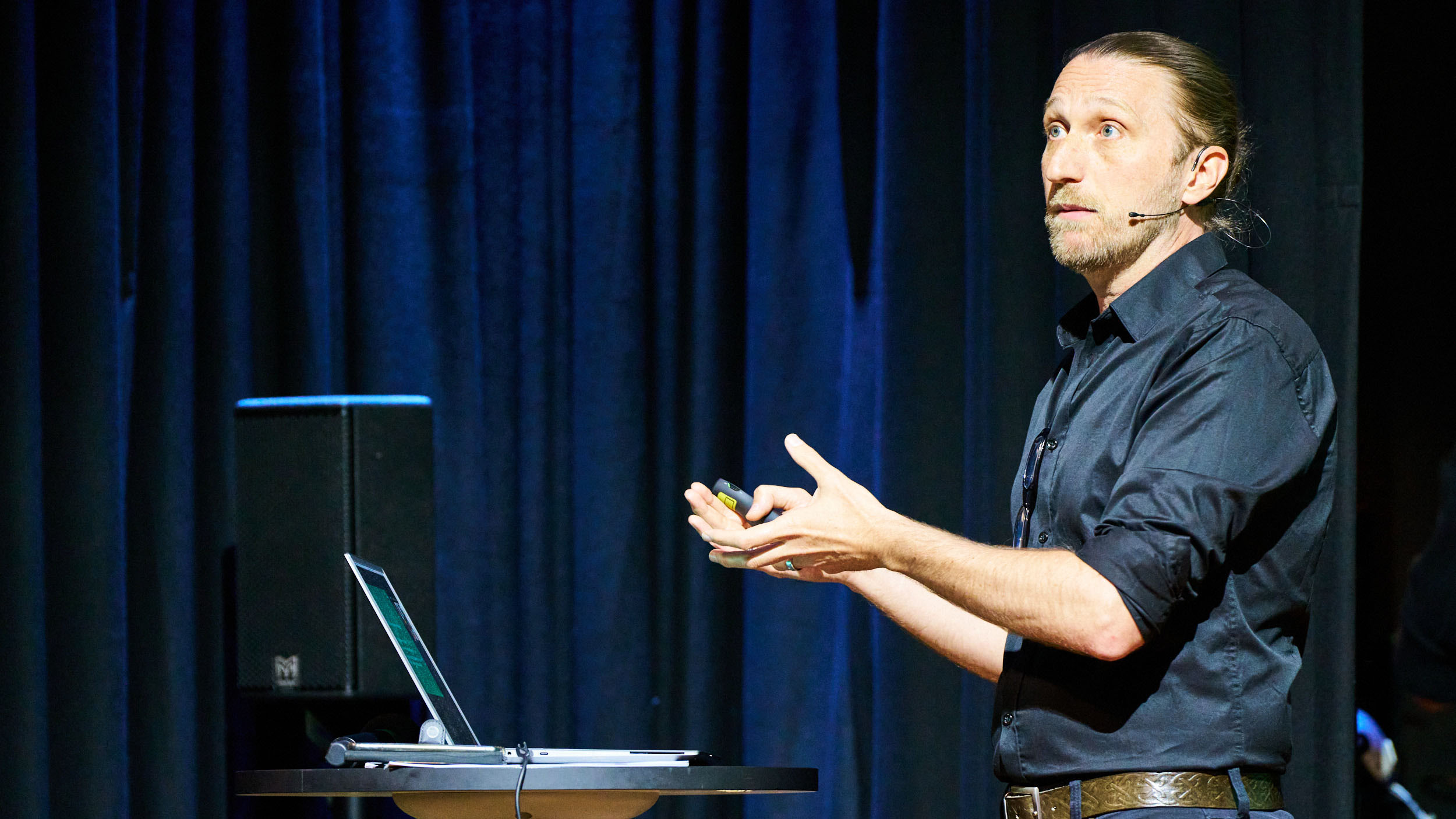
Associate professor Joris Weijdom: We want to teach makers how to use and misuse technology"
Hacking technology
The research group sees it as a crucial role of the arts to address this challenge. Not only because digital technology is increasingly used as a tool by artists and designers, but also because they are uniquely capable of making complex issues felt, and of imagining alternatives. Arts education, after all, has long focused more on process than end product. For this reason, the research group treats technology not as a goal, but as a subject, a medium, and a co-creator. “What I love about artists is that they tend to use technology in ways it wasn’t intended for, in ways we haven’t seen before,” says Joris Weijdom. “We don’t just want to teach makers how to use technology. We want to teach them to misuse it: to create unexpected, disruptive, inspiring, moving, and possibly even confronting experiences.”
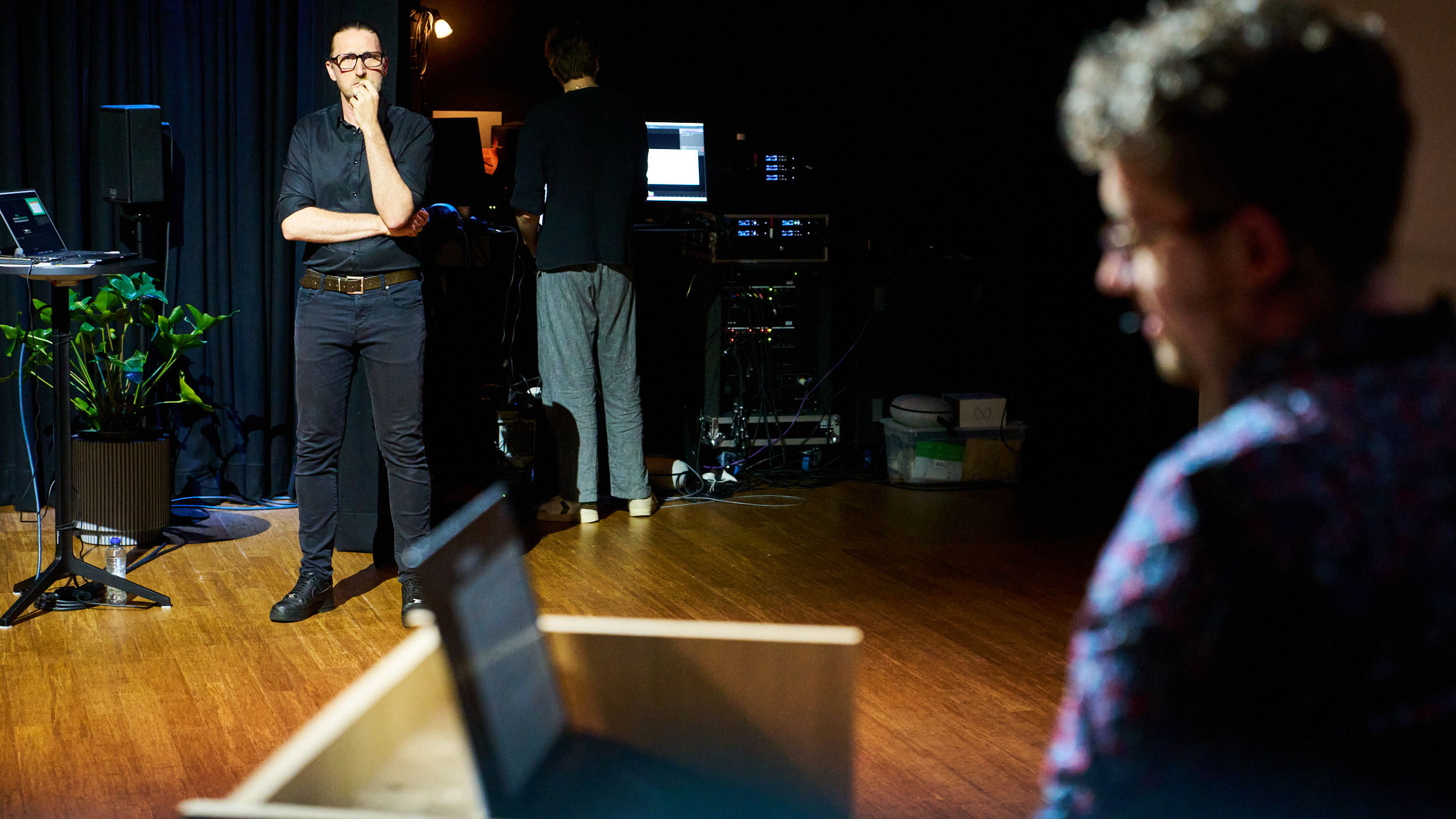
Meaningful and embodied
“That’s when new meaning emerges, and that’s what we’re after,” says Degens. “We’re focused on experiences that move you. Too often, technological design is reduced to what’s functional or efficient. In the design industry I come from, it’s all about effectiveness. But that’s not the world I believe in anymore.” He sees a lack of heart and feeling in many tech creations and seeks a warmer connection between humans and technology: “One that carries meaning for the user, the maker, and maybe one day even the technology itself.”
“Engineers often forget to personally engage with the technology they design,” Weijdom adds. In line with the theme of (dis)embody, the research group will apply his Performative Prototyping method, where designers physically involve themselves in the process and interact with one another. In contrast to brainstorming, Weijdom proposes "bodystorming": “A classic brainstorm has everyone around a table, sticking Post-its on a screen at best. But in a bodystorm, you engage physically with an idea, and create a collectively experienceable prototype.” One relevant example is Soul Paint, an award-winning immersive experience (IX) by Hatsumi and Monobanda, to which Weijdom contributed as technical dramaturg. This virtual experience allows users to visualize their emotions and bodily sensations through a 3D avatar. The research group sees it as a compelling case study: how can makers co-create embodied prototypes that engage the senses and feelings of those who experience them?
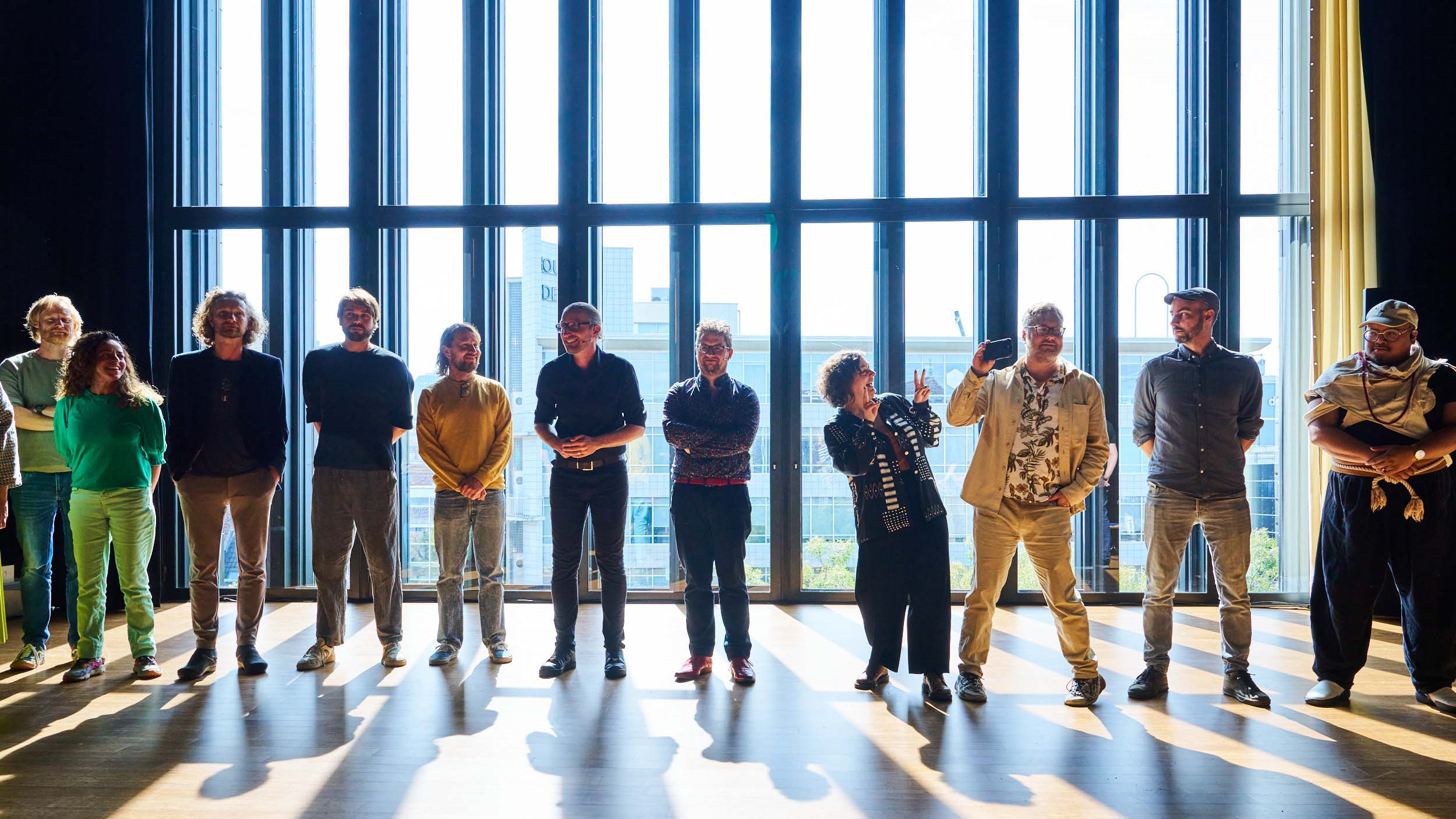
Professor Nick Degens and associate professor Joris Weijdom with collegues from the research group (Dis)Connected Technology & Creativity.
AXR lab
In preparation for their installation, Degens and Weijdom set up a technological space for shared immersive experience. In the spring, they opened the Artistic Extended Reality (AXR) lab at Oudenoord, a space where they can physically test their hypotheses. This high-tech lab gives researchers, lecturers, and students all the tools they need to immerse themselves (and others) in extended reality environments, whether home-grown or borrowed. The beauty is that you can come together without being physically present. In May, the team conducted an experiment with the Trans Realities Lab at Design Academy Eindhoven (DAE). Two labs in two locations were joined in a single virtual space. At Oudenoord, six technologists created a labyrinth, which was simultaneously explored by five people in both Utrecht and Eindhoven. Weijdom explains: “The participants in the labyrinth shared what they felt and how they experienced the space. We responded by, for example, moving the walls. Despite the physical distance, there was direct interaction between the experiencer and the designer.”
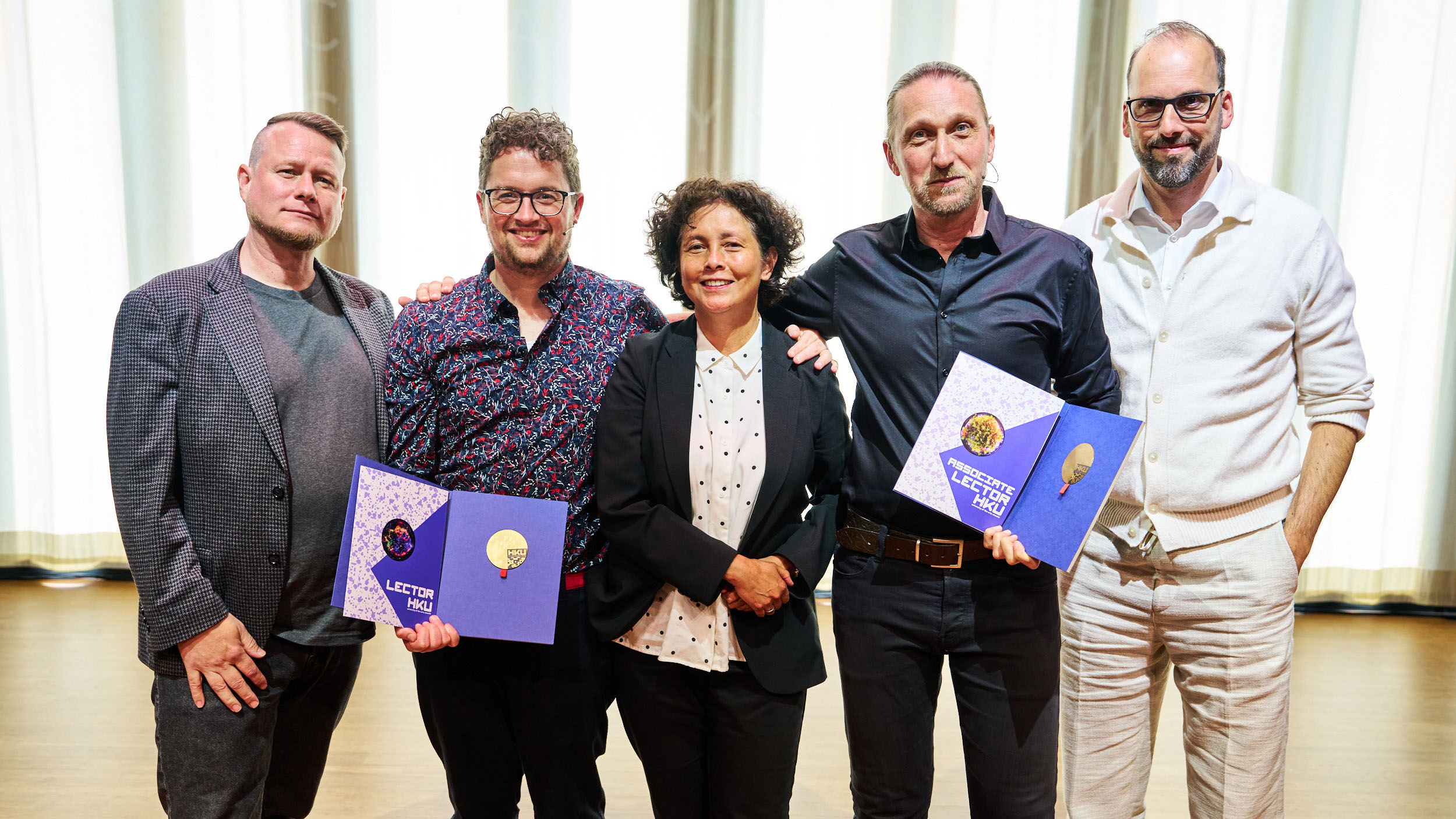
Viktor Wijnen (directeur HKU Games), lector Nick Degens, Mir Wermuth (directeur HKU Media), associate lector Joris Weijdom, Caspar Nieuwenhuis (directeur HKU Theater).
Up in flames
The DAE experiment offers a glimpse of the kinds of experiences the research group will study in the years to come. Many of these will be existing XR designs whose effectiveness and impact will be investigated by transdisciplinary teams. For example, the group has already held a session on Lacuna, the XR experience by Nienke Huitenga that was selected for the 2025 Cannes Immersive Competition. But new experiences will also be created in order to study the making process itself. A strong network of partners is already in place, ranging from the Digital Culture Fellowships of the Netherlands Film Festival and the VPRO Medialab to the universities of Utrecht and Twente and artists such as Monobanda, Steye Hallema, and Celine Daemen. Degens: “We want to use contemporary digital technology, together with these frontrunners, as a mirror for our perception of reality, our self-image, worldview, and beliefs. Society is on fire on multiple fronts, and as artists and makers, we can’t just stand by and comment from the sidelines. I believe in the power of art within this context. Our goal is to explore how that power can be expressed, both through and in spite of technology."
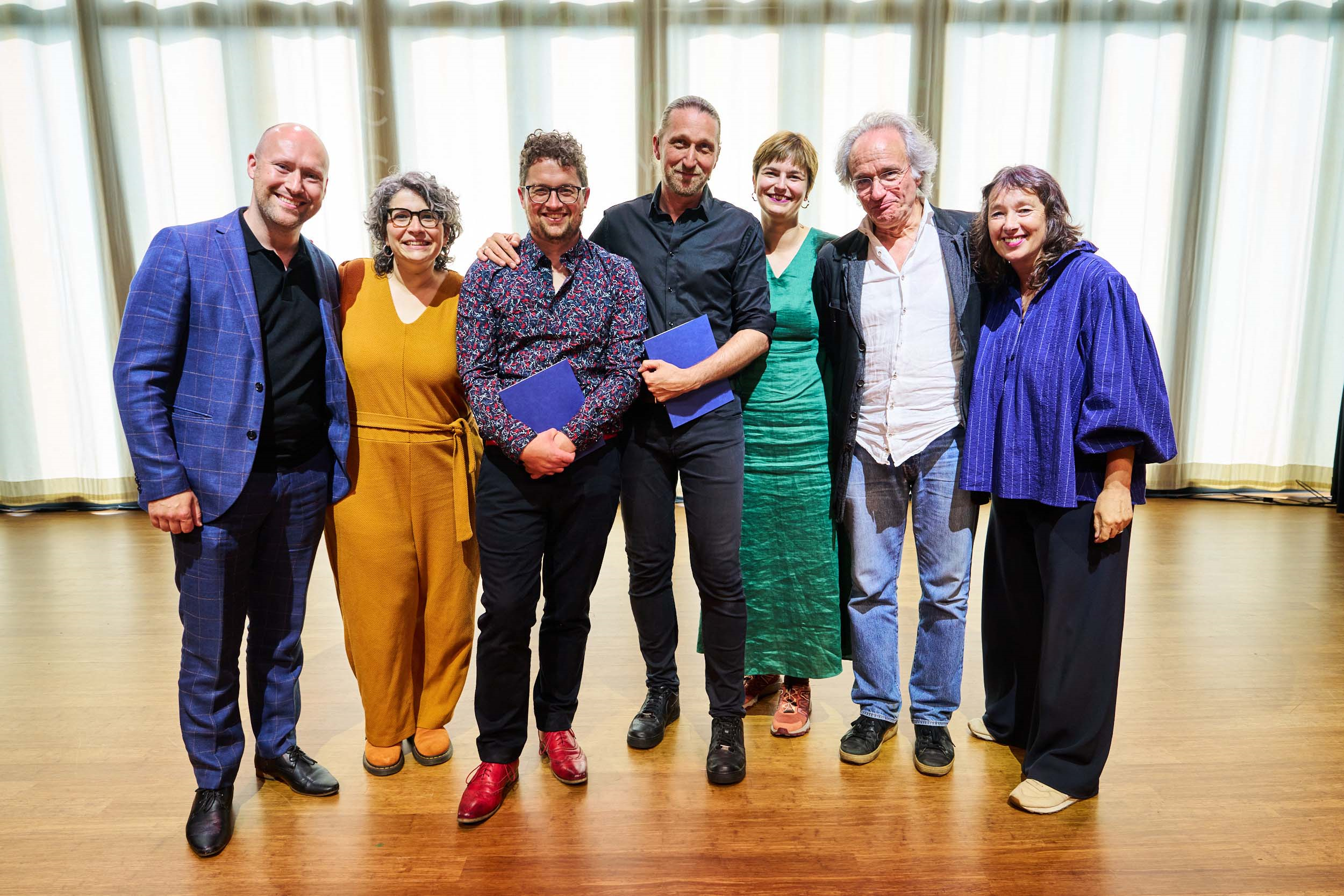
Nick en Joris with Walter van Andel, Fabiola Camuti, Veerle Spronck en Nirav Christophe from HKU research unit, and Marjanne Paardekooper.
Dr. Nick Degens explores how interactive creative technologies can contribute to meaningful behavioural and systemic change. He does this from two angles: the first involves designing innovative technologies, such as AI and AR, to address societal challenges. The second focuses on embedding these technologies in people’s lives and work to enhance meaning and well-being. Through his research at HKU, Degens aims to understand how the arts can drive technologies that make a lasting positive impact on society. Human needs and experiences are at the heart of his work.
Joris Weijdom is a researcher and designer of extended reality (XR) experiences, with a focus on interdisciplinary creative processes and performativity. He creates site-specific performative mixed reality installations and works as a technical dramaturg on both artistic and applied design projects. As associate lector at (Dis)Connected Technology & Creativity, he leads the HKU Artistic Extended Reality Lab. He also coordinates the minor in Artistic Immersive Experiences and teaches in various BA and MA programmes. In his PhD project with the University of Twente, Weijdom is developing the Performative Prototyping methodology, which combines embodied design techniques with collaborative mixed reality environments for use in professional and educational settings.
Article: Willemijn de Jonge. Photos: Thomas de Wit.